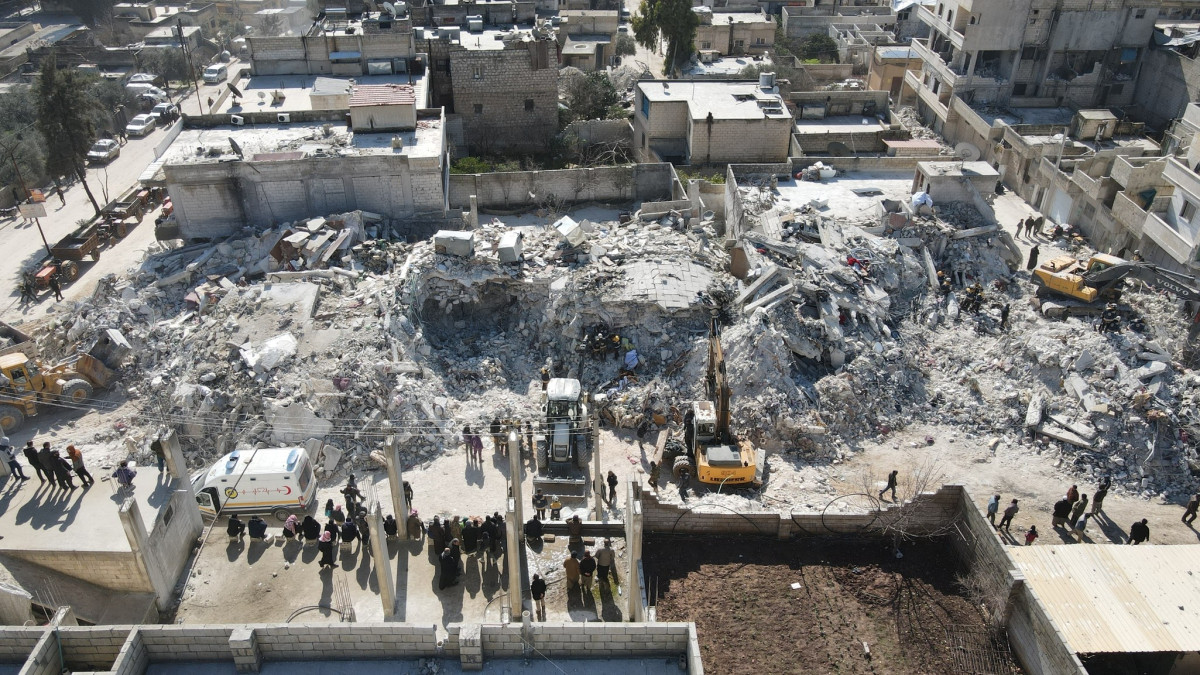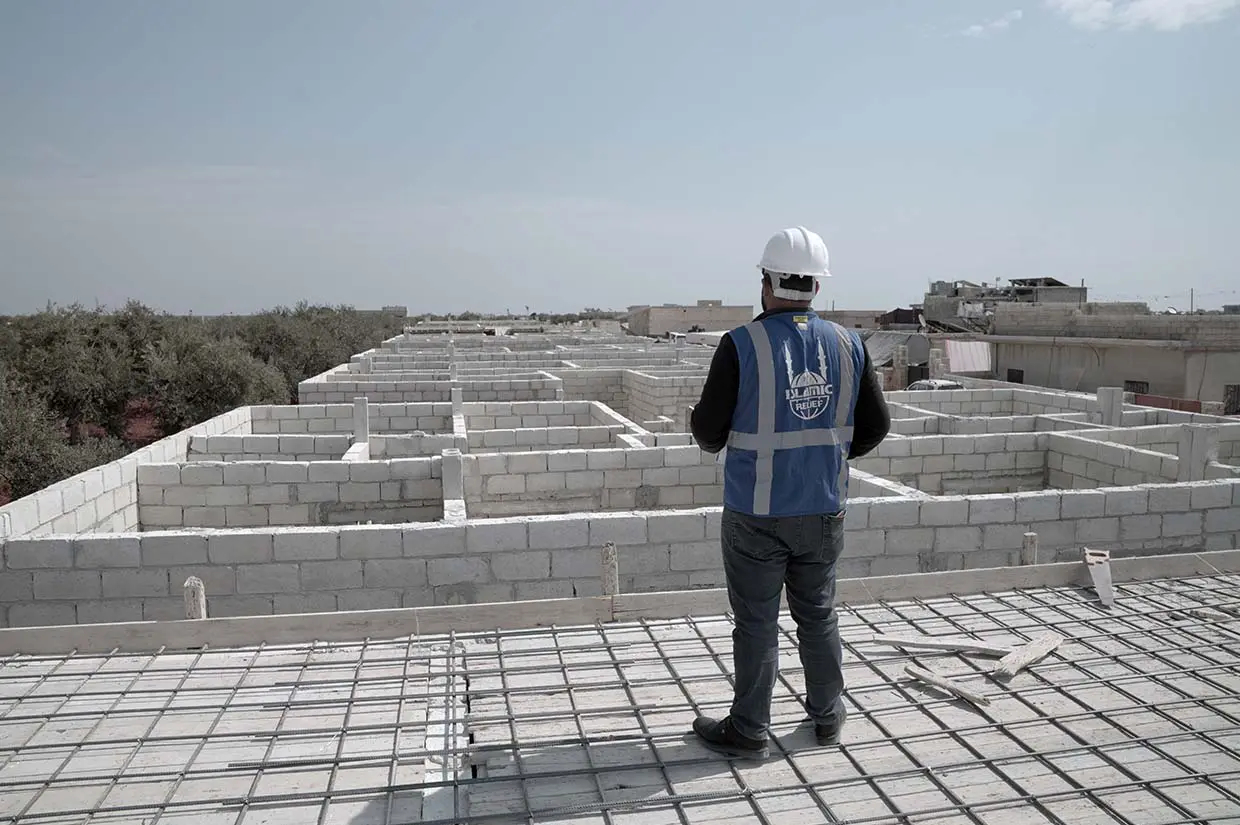Counting the Costs & Taking Stock

In Aftershocks: The February Earthquakes a Year Later – Recollections & Reflections L24 covered the impact and effects of the February 6, 2023 earthquakes, through the experiences and views of survivors, humanitarian organizations, search and rescue crews, government officials, and analysts. In the second part, L24 explores the culmination of the devastation wrought by the disaster and what has, and is, being done to address one of the world’s greatest natural disasters.
A Heavy Toll
To fully understand the devastating scope of the humanitarian crisis that resulted from the earthquakes of 2023 groups like the Syrian Network for Human Rights (SNHR) documented the deaths directly caused by the earthquakes. According to SNHR in a 2023 Annual Report, 10,024 Syrians, including 2,267 children and 1,627 women, died “both to the February 6 earthquakes themselves and to the late arrival of the UN and international humanitarian assistance.”
SNHR’s data also revealed the disparity between the distribution of deaths in regime-held versus liberated areas of Syria. Which documented 4,191 deaths in non-regime areas compared to 394 deaths in Assad-held regions and 5,439 Syrian refugees killed in Turkey due to the earthquakes. The medical sector was also heavily impacted as among those killed 73 were medical personnel, 62 were humanitarian workers four belonged to the Syrian Civil Defense (White Helmets) crews, and five were media workers.

Recent figures released this year, from the Syrian Salvation Government (SSG) revealed 6,000 earthquake-related deaths in Syria, there were 10,000 quake-related injuries, 4,200 Syrian deaths in Turkey, 1,570 of whom were returned to the liberated Syrian area for internment. The statistics also indicated that 6,846 buildings had been damaged and 1,143 had completely collapsed due to the quakes.
These earthquakes had devastating consequences for the affected population. According to the UN Office for the Coordination of Humanitarian Affairs (OCHA), over 1,800 buildings were completely destroyed and nearly 8,700 were partially destroyed. The displacement caused by the earthquakes affected an estimated 160,000 Syrians, many of whom were already living in dire conditions. Aftershocks and poor living conditions further worsened the suffering, with approximately 80% of residents forced to sleep outdoors.
The impact on educational infrastructure, already decimated by over a decade of war, was profound, with over half of schools and nearly 40% of teaching and learning spaces affected. Save the Children emphasized the need for immense efforts and resources to repair and rebuild, “a staggering 54% of schools and 37% of teaching and learning spaces … a total of 822 school buildings.”
Children in the affected areas faced psychological distress, and women and girls were at risk due to overcrowding and insufficient access to basic services. UNICEF highlighted the growing dangers faced by 3.7 million children, including the psychological impact of the earthquakes and the threat of diseases in the absence of basic services. The ongoing conflict and the aftermath of the earthquakes posed a continued danger to the well-being of the affected children.
The Syrian Salvation Government’s (SSG) Orphan Care Directorate (OCD) head, Omar Jamous told L24, “There were 537 orphans due to earthquake, from them, 61 lost of their both parents.” He also mentioned that the OCD was able to provide new shelters for 60 of the affected families by purchasing them apartments.
The seismic worsened the situation for women, displacing over 35,000 and leaving 1.3 million in need of urgent access to reproductive health services. The devastation also affected vital infrastructure, including hospitals and safe spaces for women and girls, leaving millions in need of assistance.
The humanitarian crisis in Syria was further exacerbated, with approximately 8.8 million people adversely affected. The UN Under-Secretary-General for Humanitarian Affairs revealed that 90% of Syria’s residents were living below the poverty line, and millions would face reduced food assistance due to funding shortages.
In addition to the tragic loss of thousands of lives, the earthquakes leveled entire neighborhoods and left thousands more without homes or shelter during the winter. Engineer Saeed al-Ashqar, Advisor to the Minister of Local Administration explains, “The number of destroyed buildings affected by the earthquake was 4,270, categorized into four groups: 487 completely demolished and uninhabitable, 431 partially demolished, 1,457 structurally unsound and in need of reinforcement and repairable and 1,895 suitable for habitation after restoration.”

For a region with nearly 3 million displaced, many of whom have had to relocate multiple times, the earthquakes caused yet another wave of IDP migration. According to the Syria Response Team (SRT) 334,821 families comprising 1,843,911 (1.8 million) individuals were affected in the liberated areas of northwestern Syria. Of those impacted 48,122 families, with a total of 311,662 individuals were displaced and forced to live in tents, temporary shelters, or brave the elements. The SRT indicated that 67% of earthquake IDPs were women and children and to date 51,931 have been unable to return to their homes due to damage or destruction, residing in temporary shelters or IDP camps.
It has been a year since the devastating earthquakes ravished northwestern Syria, leaving countless lives shattered and communities in ruins. The aftermath of this natural disaster has been a test of resilience for the Syrian people, as they continue to grapple with the physical, emotional, and social impacts of the catastrophe. L24 inquired about where the Syrian people stand, and the ongoing plans for recovery and reconstruction efforts.
Where are we Today & Plans for Tomorrow
The wide-scale destruction brought about by the earthquakes and over 11,000 aftershocks throughout the months following the February seismic was estimated by Syria Earthquake 2023 Rapid Damage and Needs Assessment (RDNA) at $3.7 billion in physical damages caused by the earthquake with additional losses of $1.5 billion. The total estimated impact at $5.2 billion. The GRADE Report for Syria estimated $5.1 billion in direct physical damages and $1.9 billion to Idlib alone.
With such widespread devastation and thousands displaced and homeless following the disaster, the Director of the Earthquake-Affected Directorate at the Ministry of Humanitarian Affairs and Development, Ammar al-Najjar, emphasized the pressing need for reconstruction and rehabilitation. Al-Najjar told L24, “Existing needs include the requirement for alternative buildings to compensate for the affected, rehabilitation and repairs of integral facilities such as hospitals and schools, as well as educational and medical needs for these cases.”
This underscores the critical need for comprehensive efforts to rebuild infrastructure and support the affected population. Ahmed Al-Qasim, the head of the Central Housing Department in the Ministry of Development and Humanitarian Affairs, spoke about the vital need to provide shelter for the victims that despite providing homes for 10,000 families the needs are, “still greater than the ongoing transfer operations, [leaving] families living in shelter centers, while thousands of others are still living in rented homes or with their relatives.”
A recent January visit of a UN delegation to Azaz and Jindires, one of the hardest hit regions, shed light on the ongoing humanitarian situation. The delegation, including key figures from the UN, sought to assess the progress and challenges faced by the communities one year after the earthquakes.
White Helmets board member Nada Al-Rashed detailed the initiatives and strategies implemented to respond to the aftermath of the earthquakes, she highlighted the comprehensive plan to address the impact of the disaster, independent of the ongoing conflict. “We removed around 450,000 cubic meters of debris… expanded medical points, women and family health centers, and initiated psychological and physical therapy centers, which play a significant role.”
Additionally, the organization has partnered with the Syrian American Medical Society (SAMS) to build a cancer center and medical complex in Afrin and refurbish 19 other medical facilities and 45 schools as well as repair sanitation, water, and road infrastructure.

Violet Program Manager, Khaled Qabsh, agrees that sustainability is vital to getting people back on their feet, “Violet sought to address the needs of affected families and empower them sustainably through cash-for-work projects and cash assistance for various purposes. These projects provide employment opportunities for individuals and contribute to the restoration of earthquake-damaged infrastructure and other initiatives.”
While significant strides have been made in the recovery and reconstruction process, the road ahead remains daunting. The scale of the devastation demands sustained and coordinated efforts from both national and international actors. The need for alternative housing, infrastructure rehabilitation, and livelihood restoration is paramount to ensure the long-term well-being of the affected communities.
Muhammad Pasha, a survivor of the earthquakes who lost his entire family a year ago, shared his experience, stating, “I lost everything that day, and though the memory is tragic, yet as long as I understand it is from God; I do not grieve, for it is He who provided me with my home and family and it is He back that which was entrusted to me, and I have full faith in this matter.” Pasha’s words reflect the profound emotional and psychological toll the earthquakes have taken on individuals, highlighting the long-lasting trauma that many continue to endure.
The Syrian people’s resilience and determination to rebuild their lives in the face of adversity is truly remarkable. As Pasha concludes, “My hopes are to rebuild a new life with a new home and family, and to gather the scattered pieces of my soul.” It is this unwavering spirit that will continue to drive the ongoing recovery and reconstruction efforts, as the nation strives to overcome the aftermath of the 2023 earthquakes and build a more resilient future for all.









